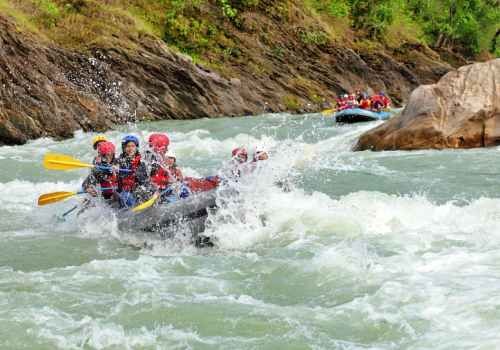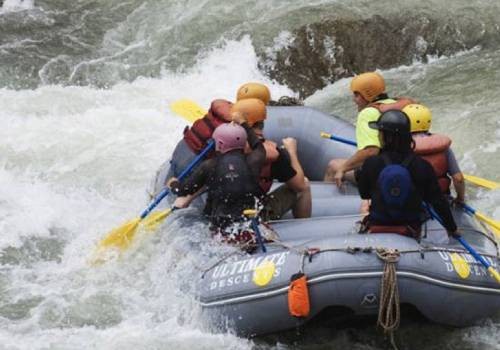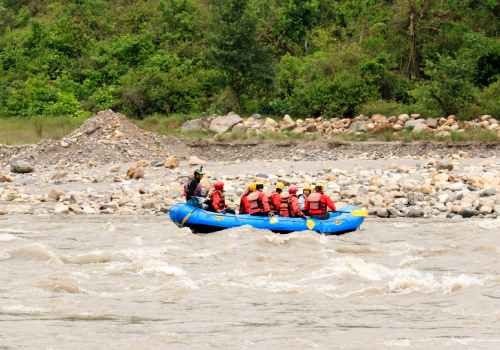‘Enjoy great adventure paddling through exciting rapids and bouncy waves’
Kaligandaki River Rafting, located around Mid-West Nepal, which is a few hours’ drive from scenic city Pokhara to reach our rafting starting or ‘Put in Point’, Kali Gandaki River originates from the glaciers of Mustang Himal. The river turns and winds downstream from the Mustang area and through the world deepest Kali Gandaki Gorge, in between Mt. Dhaulagiri and Mt. Annapurna Himalayan range.
As the river flows downstream and eventually joins with Trisuli River to form a large and wide Narayani River at Dev Ghat within the district of Chitwan around low flat Gangetic plain of Terai belt.
Further downstream the river gets bigger with large water volume, as Mygdi and Modi River meets Kali Gandaki River fed from the glaciers of world 7th high Mt. Dhaulagiri and 10th high Mt. Annapurna to join at Kusma, a moderate size farming town.
After getting organized for three days splash, and gathering information on rafting paddling technique and safety procedures, float downstream to encounter Grade I, II to IV depending upon its water level and the time of the seasons.
This exciting white-water adventure leads to breathless challenging rapids, a delightful adventure for hardy adventurer as well for beginners, enjoying great adrenaline thrills rafting the Himalayan glacial rivers.
An interesting and exciting river for rafting as you paddle to conquer great big rapids named ‘Leopards Jump’ and ‘Devils Shake’, with many more exciting white water thrills as you float downstream.
Kali-Gandaki River, gaining much popularity over the years where rafting takes towards serene green environment and it has all the thrills, excitement plus a scenic view of the landscape, flora, and fauna.
It also includes various different species of birdlife with monkeys and other wild-life often spotted on these exciting rafting activities.
Besides its superb scenery on float one can enjoy and explore rural farm village life while rafting or at the end of the rafting, as you spend overnight in camping on sandy beaches with time for walks along the local villages.
Finally, rafting comes to an end in a place called Jungle Ghat near the village of Mirmi, where our vehicle will be at standby, after changing with warm dry clothes, and then exciting drive brings you back at Pokhara after a great thrill and adventure on Kali Gandaki River Rafting.




